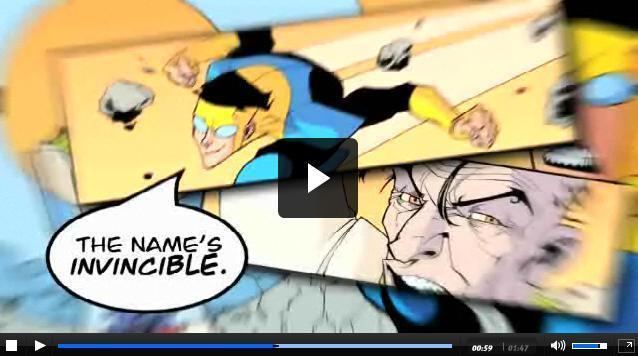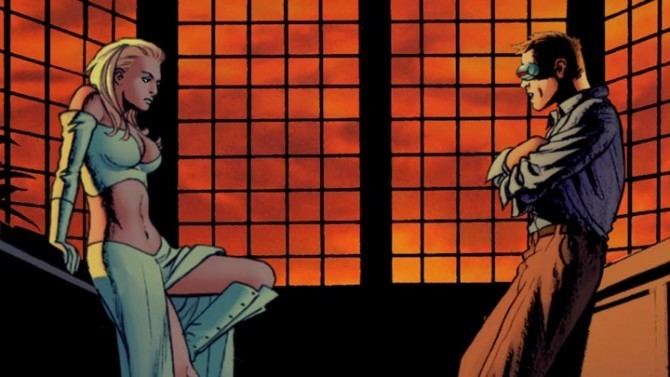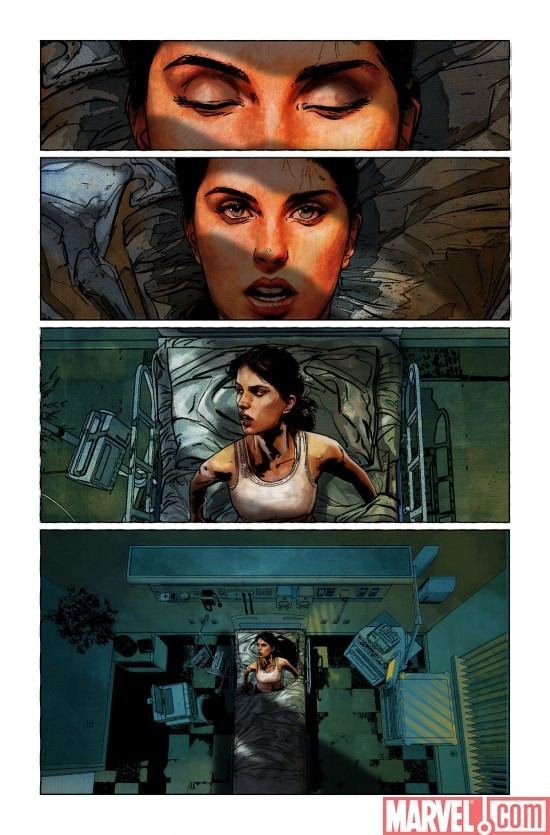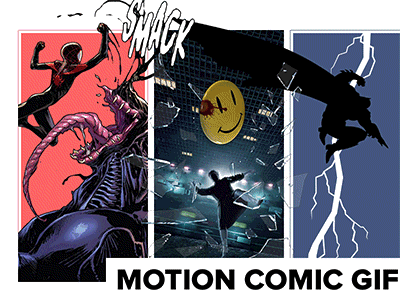 | ||
A motion comic (or animated comic) is a form of animation combining elements of print comic books and animation. Individual panels are expanded into a full shot while sound effects, voice acting, and animation are added to the original artwork. Text boxes and sound effect bubbles are typically removed to feature more of the original artwork being animated. Motion comics are often released as short serials covering a story arc of a long running series or animating a single release of a graphic novel. Single release issues of a story arc are converted into ten- to twenty-minute-long episodes depending on content.
Contents

History
The earliest examples of motion comics are found in independent creations such as Broken Saints (2001). However, the concept was fully outlined in the mid-1960s by science fiction author Philip K. Dick in his novel The Zap Gun, an expansion of his novella Project Plowshare, which was written in 1964 and first published as a serial in the November 1965 and January 1966 issues of Worlds Of Tomorrow magazine. In Dick's novel, weapon designers of the future are mediums, who create their new designs in trance states. The weapon designs are extracted telepathically from a motion comic book, The Blue Cephalopod Man from Titan, created by mad Italian artist Oral Giacomini. Dick describes both the storyline and the animated panels of this comic book in detail.

In 2005, Lions Gate released an animated version of the Saw: Rebirth comic, one of the first examples of an animated comic created to tie into a film franchise. The first major motion comics released, which is also the first use of the term "motion comic," were released by Warner Bros., the owner of DC Comics to coincide with the film premieres of The Dark Knight and Watchmen, releasing an adaptation of Batman: Mad Love and Watchmen: Motion Comics, adapting the comic book of the same name. In 2010 a motion comic called Inception: The Cobol Job was released as prequel and prologue to the movie Inception. In 2012 a prequel motion comic of the movie Dredd was made to show the origins of the movie's main antagonist, Ma-Ma.

Marvel Comics has released motion comics using a company owned by Neal Adams. The first release was an adaptation of Joss Whedon and John Cassaday's Astonishing X-Men: "Gifted". Other adaptations include Spider-Woman: "Agent of S.W.O.R.D.", Iron Man: "Extremis", Black Panther, Thor/Loki: Blood Brothers, Inhumans and Astonishing X-Men: "Dangerous".

Examples from other companies include Peanuts Motion Comics, Zits Motion Comics, the Dead Space prequel comics and the "Lucy" element of the ABC News documentary Earth 2100.

Another example would be a four-part motion comic based on the Uncharted video game series as a prequel called Eye of Indra, released for the PlayStation Network.
Illustrated films
A sibling format to motion comics called illustrated films was developed by transmedia studio HALO 8 Entertainment with their Godkiller, which was produced at the same time as (but separately from) the Watchmen motion comic. As opposed to repurposing an existing comic book, Halo-8 created new sequential art that was designed from its inception to be transmedia art for both a comic book and an illustrated film. Godkiller creator Matt Pizzolo told Bloody Disgusting "Godkiller was just a slower production than Watchmen because we had to create 200 pages of art and story from the ground up first, rather than starting with one of the greatest comic books ever made as source material. Plus we had a dozen voice performers instead of just one."
Although aesthetically similar to motion comics, Pizzolo identifies illustrated film influences as including Liquid Television, the MTV cartoon adaptation of The Maxx, the Berserk anime series, Chris Marker's La jetée, the motion comic Broken Saints, and the experimental cinema of Ralph Bakshi.
According to Comics Alliance, Pizzolo stated "the difference between an illustrated film and a motion comic is kind of the difference between a movie that was shot in 3D versus a movie that was shot in 2D but got a 3D post-conversion. We're not repurposing an existing comic book here, we're building something unique from scratch."
The 75-minute Godkiller feature was released theatrically in 11 cities before it was distributed on DVD and cable VOD.
Upcoming illustrated films from Halo-8 include Ben Templesmith's original project Black Sky and an adaptation of Tim Seeley's Hack/Slash.
Reception
Reception to motion comics has been mixed.
NewTeeVee commented, "This first generation [of motion comics] is admittedly crude, but there is enough 'motion' in these motion comics to keep the viewer’s attention, and so far the music and voice acting have been great. Plus, the level of experimentation and sophistication will grow as more are produced."
ComicsWorthReading.com asked,
When you add camera tricks and a soundtrack to a comic, is it still a comic? Or just a poor excuse for a cartoon, done on the cheap? Are they reaching a new audience, attracted by a new format in more modern sales outlets (that come to them)? Will those hypothetical new readers eventually wind up buying traditional-format comics? Could this be just another way to try and make more money from the same, previously existing content?
Artist John Cassaday described his experience with the motion comic adaptation of Astonishing X-Men, saying:
I'd seen some motion comic animation, and the quality varied. When Marvel approached me, I was initially hesitant, but after looking at some test footage and hearing how committed they were, I knew what direction they were wanting to go."
Comparison to visual novels
The visual novel, a form of interactive fiction largely created in Japan (and also constituting the majority of PC games sold in the country), makes similar usage of animated transitions between still graphic images for narrative purposes. Visual novels, which have been released since the 1980s, also make use of background music and voice talents in order to help drive the narrative.
However, unlike most Western motion comics:
